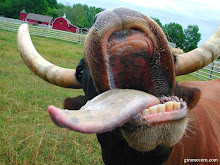Science is so much more fun when presented in a form of a non-fiction novel-like book. I recently read 'Thinking, fast and slow' by Daniel Kahneman, which I had bought more than a year back at the Heathrow airport. It was a best-seller and I had a long desire to read something on psychology, which prompted me to bye the book standing out in the bestseller section. But not until recently could I catch up on my reading backlog (thanks to infinite free time I have after defending my Ph.D. dissertation). Surprisingly, it turned out to be one of my best reading experiences. The book could be described as a massive review of scientific literature in behavioral psychology.
I had never thought that a subject like psychology could be so intricately linked with decision making and economics. Kahneman and Tversky (the author's collaborator) laid solid foundations in the field of 'behavioral economics' with their simple yet sound experiments. Starting with basic concepts of heuristics (loose pointers which enable us to reach a decision) and biases, the book introduces the reader to the complexity of decision making. The theory is convincing enough on how our intuitive judgements and decisions are risky 'chances' at best or irrational and harmful at worst. Kahneman educates the reader with the works of several scientists and theorists, in a simple language and giving utmost credit to the experimenters. Reading the book, I realized how ignorant we are about the irrationality or biasness of our judgements and decisions. Furthermore, one can only imagine on how much of psychology has Kahnemann seen develop before his eyes.
The author vastly uses astounding examples, problems and tasks to keep the reader involved throughout the book. Most complex concepts are kept short and succinct, beautifully avoiding the details. Once started, it's difficult to keep the book aside. But as one review rightly suggests "buy it fast. read it slowly.", to maximize the benefit from the book it is indeed helpful to read it slowly. I found it good to read a maximum of 2-3 chapters daily, which helps the concepts sink in. The book is also very nicely organized and divided into small chapters. It is a must read for almost anyone from all walks of life. My personal favorite chapters were on anchors, regression to the mean and rare events. Read the book to know more on what they mean!


